What is your model supposed to be doing? And how is it testable?
In your question you haven't described your testable assessment of the model the results of which would be represented in a confusion matrix.
A confusion matrix helps you represent and explore the different types of "accuracy" of a predictive system such as a classifier. It requires your system to make a choice (e.g. yes/no, or multi-label classifier) and you must use known test data to be able to score it against how the system should have chosen. Then you count these results in the matrix as one of the combination of possibilities, e.g. for binary choices there's two wrong and two correct.
For example, if your cosine similarities are trying to predict if a document is in the same "category" as another, and you do know the real answers, then you can score them all as to whether they were predicted correctly or wrongly.
The four possibilities for a binary choice are:
- Positive prediction vs. positive actual = True Positive (correct)
- Negative prediction vs. negative actual = True Negative (correct)
- Positive prediction vs. negative actual = False Positive (wrong)
- Negative prediction vs. positive actual = False Negative (wrong)
It's more complicated in a multi-label system as there are more combinations, but the correct/wrong outcome is similar.
About "accuracy".
There are many kinds of ways to measure how well the system performs, so it's worth reading up on this before choosing the way to score the system. The term "accuracy" means something specific in this field, and is sometimes confused with the general usage of the word.
How you would use a confusion matrix.
The confusion matrix sums (of total TP, FP, TN, FN) can fed into some simple equations which give you, these performance ratings (which are referred to by different names in different fields):
- sensitivity, d' (dee-prime), recall, hit rate, or true positive rate (TPR)
- specificity, selectivity or true negative rate (TNR)
- precision or positive predictive value (PPV)
- negative predictive value (NPV)
- miss rate or false negative rate (FNR)
- fall-out or false positive rate (FPR)
- false discovery rate (FDR)
- false omission rate (FOR)
- Accuracy
- F Score
So you can see that Accuracy is a specific thing, but it may not be what you think of when you say "accuracy"! The last two are more complex combinations of measure. The F Score is perhaps the most robust of these, as it's tuneable to represent your requirements by combining a mix of other metrics.
I found this wikipedia article most useful and helped understand why sometimes is best to choose one metric over the other for your application (e.g. whether missing trues is worse than missing falses). There are a group of linked articles on the same topic, from different perspectives e.g. this one about search.
This is a simpler reference I found myself returning to: http://www2.cs.uregina.ca/~dbd/cs831/notes/confusion_matrix/confusion_matrix.html
This is about sensitivity, more from a science statistical view with links to ROC charts which are related to confusion matrices, and also useful for visualising and assessing performance: https://en.wikipedia.org/wiki/Sensitivity_index
This article is more specific to using these in machine learning, and goes into more detail: https://www.cs.cornell.edu/courses/cs578/2003fa/performance_measures.pdf
So in summary confusion matrices are one of many tools to assess the performance of a system, but you need to define the right measure first.
Real world example
I worked through this process recently in a project I worked on where the point was to find all of few relevant documents from a large set (using cosine distances like yours). This was like a recommendation engine driven by manual labelling rather than an initial search query.
I drew up a list of goals with a stakeholder in their own terms from the project domain perspective, then tried to translate or map these goals into performance metrics and statistical terms. You can see it's not just a simple choice! The hugely imbalanced nature of our data set skewed the choice of metric as some assume balanced data or else they will give you misleading results.

Hopefully this example will help you move forward.
